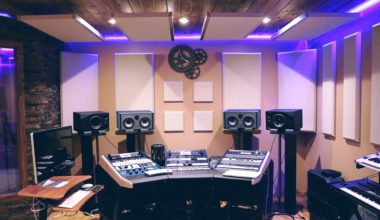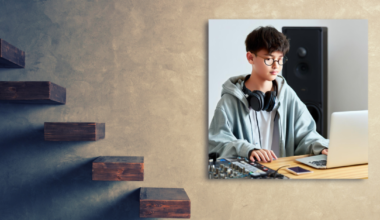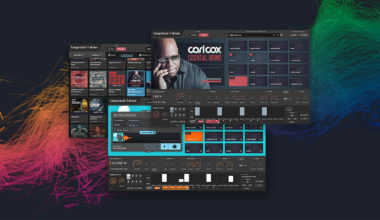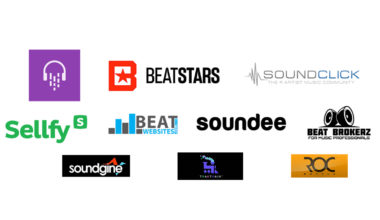So, you’ve been crafting beats that make heads bob and hearts hum, and now you’re ready to share them with the world. But not just any part of the world. You’re aiming high. You’re shooting for the stars. Or, more specifically, you’re shooting for the Lofi Girl. So how to do you go about getting your music discovered by Lofi Girl?
Lofi Girl, with her recognizable artwork style and animated character, is like the Mount Everest of the lo-fi music scene. It’s the peak that every lo-fi artist dreams of conquering. But as we all know, getting to the top of Everest isn’t just about lacing up your boots and starting to climb. It takes planning, preparation, and a whole lot of perseverance.
In the same way, getting your music discovered by Lofi Girl isn’t just about making a beat and hitting ‘upload’. It’s about understanding the landscape, knowing the route, and being equipped with the right tools and techniques.
So, are you ready to embark on this journey? Are you ready to navigate the twists and turns of the music industry, brave the harsh winds of competition, and make your mark on the snowy peak of Lofi Girl? If your answer is ‘yes’, then keep reading. This guide is your Sherpa, your compass, your map to the top.
Building Your Online Presence: Setting Up Your Digital Stage
Imagine you’re a musician in the physical world. You wouldn’t just start playing your music in an empty field, hoping that someone will stumble upon you, right? You’d find a stage, a platform, a place where people gather. You’d make sure that when you start playing, there’s an audience to hear you.
The digital world is no different. Before you can expect to get your music discovered by Lofi Girl, you need to set up your digital stage. You need to have an online presence.
But what does an online presence mean? It’s like your digital footprint in the vast desert of the internet. It’s what people find when they type your name into a search engine. It’s your social media profiles, your music on streaming platforms, your website, your blog posts, your online interactions. It’s everything that represents you in the digital world.
So, start by asking yourself: If someone searched for my music online, what would they find? If the answer is ‘not much’, then it’s time to start building.
Create social media profiles on platforms where your potential listeners hang out. This could be Instagram, Twitter, SoundCloud, or even TikTok. Share snippets of your music, behind-the-scenes photos, thoughts about the music industry, or anything else that represents you as an artist.
Next, make sure your music is available on popular streaming platforms like Spotify, Apple Music, and YouTube. These platforms are like the music festivals of the digital world. They’re where people go to discover new music.
Finally, consider creating a website or a blog. This can be your digital home, a place where fans can learn more about you, listen to your music, and stay updated on your latest news.
Remember, building an online presence is like building a stage. It takes time and effort, but once it’s set up, it gives you a platform to share your music with the world. And who knows? Maybe one day, Lofi Girl will be in the audience.
Growing Your Audience: Cultivating Your Digital Garden
Think of your audience as a garden. Each listener is a seed, ready to grow into a loyal fan. But seeds don’t just grow on their own. They need the right conditions: sunlight, water, and good soil. In the same way, growing your audience requires the right conditions: exposure, engagement, and great music.
One way to provide these conditions is through platforms like SubmitHub. Picture SubmitHub as a bustling farmers market, filled with curators who are eager to discover new music. These curators can be playlisters, blog or website owners, or even YouTube channel owners. They’re like the bees of the music industry, buzzing from artist to artist, spreading the pollen of new music.
Here’s how it works: You upload a track, give it a basic genre and bio, and then submit it to a list of curators. If a curator likes your track, they might add it to their playlist, feature it on their blog, or share it on their YouTube channel. This exposure can help your music reach new ears, attracting more seeds to your garden.
But remember, exposure is just the sunlight. You also need to provide the water and the good soil. Engage with your audience. Respond to comments on your tracks. Share behind-the-scenes content. Show your audience that there’s a real person behind the music. This engagement can help turn casual listeners into loyal fans, helping your garden to flourish.
And of course, don’t forget the most important ingredient: great music. Your music is the seed. It’s what attracts listeners in the first place. So keep honing your craft, keep experimenting, keep pushing your boundaries. The better your music, the more seeds you’ll attract.
By growing your audience, you’re not just increasing your chances of getting discovered by Lofi Girl. You’re also cultivating a community of listeners who appreciate your music, and that’s a reward in itself.
Crafting Your Track: Sculpting Your Sonic Masterpiece To Get Discovered by Lofi Girl
Creating a track that catches the ear of Lofi Girl is like sculpting a masterpiece from a block of marble. It requires vision, precision, and a deep understanding of your materials. In this case, your materials are your samples, your beats, and your melodies.
One of the key elements of a Lofi Girl track is soothing chords. Think of these chords as the base of your sculpture, the foundation upon which everything else is built. These chords should give off a warm, relaxing, and maybe even ambient feeling, setting the mood for your track.
Next, consider your drums and textures. These are like the details that bring your sculpture to life, the subtle touches that make it unique. Try isolating different sounds from nature samples and turning them into unique percussive elements. This could be a transient from a tree rustling in the wind or a snippet of rain. These unique sounds can add texture and rhythm to your track, making it stand out from the crowd.
But remember, a sculpture is more than just a collection of details. It’s a cohesive whole, a single piece that tells a story. So, as you’re crafting your track, always keep the big picture in mind. How do your chords, your drums, your textures come together to create a single, cohesive track? How do they tell a story, evoke a mood, transport the listener to another world?
Crafting a track that gets discovered by Lofi Girl is no easy task. It requires skill, creativity, and a lot of hard work. But with the right approach, and a bit of luck, you might just create a sonic masterpiece that catches the ear of Lofi Girl.
Creating Melodies: Painting with Sound
Creating a melody is like painting a picture. Each note is a stroke of the brush, each chord is a blend of colors, each rhythm is a pattern in the canvas. And just like in painting, the key to creating a great melody is balance. Balance between repetition and variation, between simplicity and complexity, between familiarity and novelty.
One way to achieve this balance is by slowly introducing new layers. Imagine you’re painting a landscape. You wouldn’t just slap all the colors on the canvas at once, right? You’d start with the sky, then add the mountains, then the trees, then the details. Each layer adds depth and complexity to the picture, but it’s introduced gradually, giving the viewer time to take it in.
The same principle applies to creating melodies. Start with a simple motif, a short sequence of notes that serves as the backbone of your melody. Then, gradually add layers. This could be a counter-melody, a harmonic accompaniment, a rhythmic variation. Each layer adds depth and complexity to your melody, but it’s introduced gradually, giving the listener time to take it in.
When choosing your instruments, consider their tone. Just like different colors evoke different emotions, different instruments evoke different moods. Try using instruments that produce a warm tone, such as an e-piano. You can also add layers of guitar or other instruments to add depth to your track. Just remember to keep everything warm and not too bright. After all, you’re painting a sunset, not a midday sun.
Creating a melody that catches the ear of Lofi Girl is a delicate balance. It requires a keen ear, a creative mind, and a sensitive touch. But with practice and patience, you can paint a sonic picture that is as captivating as it is unique.

Final Thoughts: Charting Your Course to Getting Discovered by Lofi Girl
So, you’ve built your online presence, grown your audience, crafted your track, and created your melodies. You’ve climbed mountains, crossed rivers, and navigated through dense forests. You’ve put in the hard work, the sweat, the late nights. Now, you’re standing on the edge of a cliff, looking out at the vast ocean of the music industry. And somewhere out there, on the distant horizon, is Lofi Girl.
Getting your music discovered by Lofi Girl may seem like a daunting task. It’s like setting sail across the ocean, not knowing what storms you might encounter, what challenges you might face. But remember, every journey starts with a single step. Or in this case, a single beat.
As you chart your course to Lofi Girl, remember to stay true to yourself. Your music is a reflection of you, your experiences, your emotions, your ideas. It’s your voice, your way of communicating with the world. So, don’t try to be someone else. Don’t try to sound like someone else. Be you. Sound like you.
And most importantly, enjoy the journey. Making music isn’t just about getting discovered by Lofi Girl. It’s about expressing yourself, exploring your creativity, and connecting with others. It’s about the joy of creating something from nothing, the thrill of seeing your ideas come to life, the satisfaction of sharing your work with the world.
So, set your sights on Lofi Girl, but don’t forget to enjoy the journey. After all, the journey is where the music happens.





